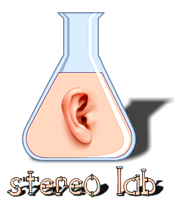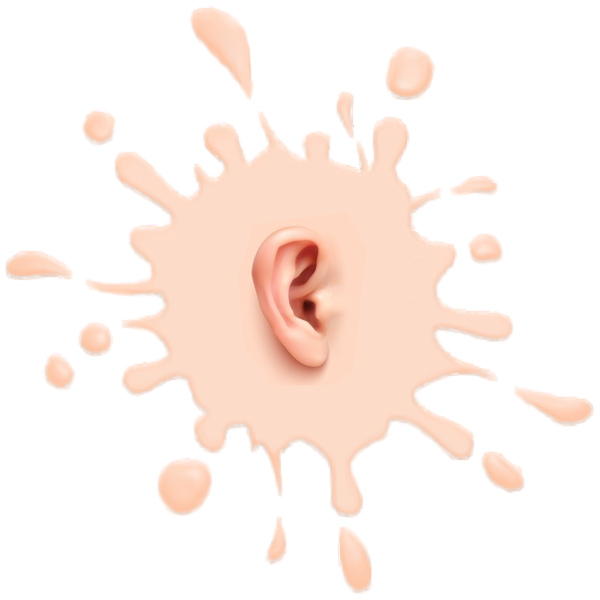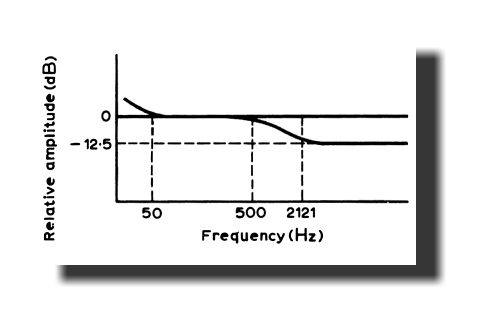Stereo Lab - Phonograph Displacement signal

Phono Equalisation EQ-S - Displacement

Phono Equalisation EQ-S is designed to produce a signal which represents the instantaneous displacement of the stylus in the record groove as the disc plays. Stereo Lab derives this signal from the unequalised signal from a moving-coil, or moving-magnet cartridge; the output of which represents the instantaneous velocity of the stylus in the groove. Put simply, the displacement signal is useful because you are actually "hearing the sound of the groove". It is also a useful equalisation when examining groove damage, once again because you are actually hearing (and seeing if you are using a DAW) the waveform of the physical damage.
The results are somewhat surprising when listening to a modern LP recording. The sound is far from the "squeal" that you hear if you listen to an unequalised needle-drop. Instead the sound is better balanced that you would imagine, even a little muffled and lacking in treble. The reason for this is as follows.
All dynamic cutter heads are voltage to velocity transducers. So, if the record cutter-head is fed a signal with has a constant amplitude with respect to frequency (a signal with a flat frequency response), the cutter will respond to this signal with constant velocity. That's to say, as the frequency increases and the slope of the signals steepen, the amplitude of the groove inscribed on the disc will fall. The cutter is thus an integrator because velocity is the time-differential of displacement (or, displacement is the time-integral of velocity). So, the displacment of the groove on the disc x(t) is related to the audio signal v(t) such that,
x(t) = 1/ω ∫ v(t) dt [where ω is 2πf]
The important part of this equation is the 1/ω part which indicates that the displacement falls with increasing frequency. In fact, the displacement of the groove falls at 6dB/octave with respect to the signal driving the cutter head.
If this record is played with a cartridge which responds to the velocity of the stylus as it traces the groove (and all modern, electromechanical cartrides do), its voltage output will represent the time differential of displacement. The differentiating effect of the cartridge will thus reverse the integration of the cutter and the output signal will once again has a flat characteristic with respect to frequency. We can express this by saying; the falling response of the cutter is cancelled out by the rising response of the cartridge.
This mirror-image nature of cartridge and cutter is why we can speak of complementary recording and playback equalisers. But in doing so, it's easy to forget that this the physical "wiggles" inscribed in the disc do not match the frequency characteristic of either the pre-equalised signal, or the post-equalised signal. They exist in a little-appreciated nether-world.

The signal derived from the displacement of the groove has a frequency characteristic which has two broad regions of flat-response at high and low frequencies, separated by a step of 12.5dB, as illustrated above. The first region is due to the turnover filter in the recording equaliser. This cuts bass frequencies and thereby forces a rising response through the bass-middle frequencies. This complements the falling response of the cutter-head. The second region is due to pre-emphasis, where once again, the rising response complements that of the cutter. The 12dB shelf is caused by the flat part of the recording characteristic (for example in RIAA, between 500Hz and 2121Hz) where there is no compensation for the falling response of the cutter-head.
Incidentaly, the two flat regions of the frequency response of the displacement characteristic were exploited by older, ceramic cartridges which do indeed respond to physical displacement. They dealt with the -12dB treble shelf with a complementary, broad resonance at high-frequencies. This is why these cartridges did not require a RIAA equaliser.
Links
 Home page
Home page
For all support issues, go here.
For Pspatial Audio sales, email: sales@pspatialaudio.com

© Pspatial Audio 2015 - 2020. All rights reserved.  Apple Certified Developer. Stereo Lab, Aria 51, Aria 20, Head Space, Groove Sleuth, iLOOP and FRANCINSTIEN T-Sym are trademarks of Pspatial Audio. FRANCINSTIEN and Bride of FRANCINSTIEN (BoF) are trademarks of Phaedrus Audio. Macintosh and the Mac logo are trademarks of Apple Computer, Inc.
Apple Certified Developer. Stereo Lab, Aria 51, Aria 20, Head Space, Groove Sleuth, iLOOP and FRANCINSTIEN T-Sym are trademarks of Pspatial Audio. FRANCINSTIEN and Bride of FRANCINSTIEN (BoF) are trademarks of Phaedrus Audio. Macintosh and the Mac logo are trademarks of Apple Computer, Inc.



